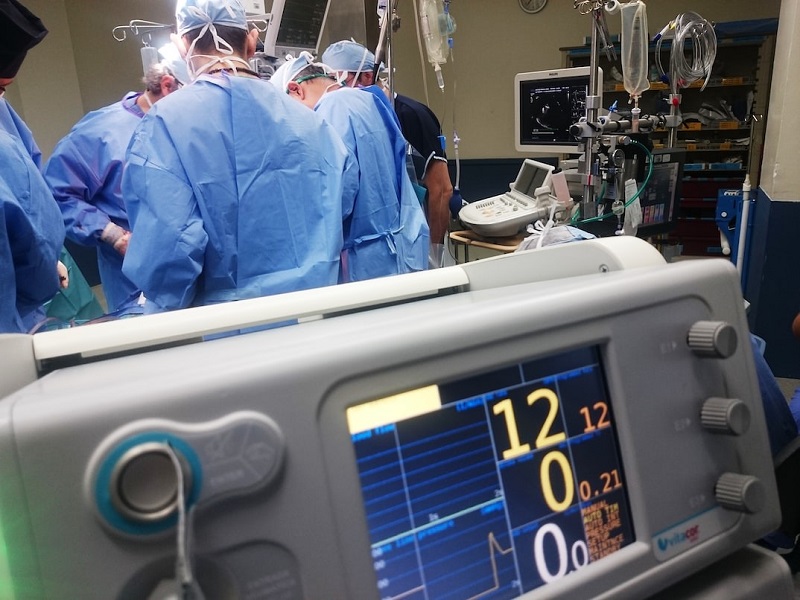|
Doctors experiencing burnout are twice as likely to be involved in patient safety incidents, and four times more likely to be dissatisfied with their job, according to research published by The BMJ.
In the UK, a third of trainee doctors report that they experience burnout to a high, or very-high, degree.
And burnout can cause people to make mistakes such as duplications, incorrect information, and late data entry causing incorrect decision-making. Therefore, it is important that healthcare workers including nurses, doctors and clinicians are given the right amount of support.
Speaking to BBH, Hannah Wilkinson, head of people and culture at Radar Healthcare, shares five ways health tech companies can alleviate burnout for doctors and other healthcare workers across the workforce.
- Implement easy to use systems
The best systems are the ones that are effective, yet easy to use, and healthcare technology companies should work alongside healthcare workers to design and ensure their systems are meeting these standards.
Administration is one of the key tasks of a healthcare worker and keeping on top of this can be extremely stressful and time consuming, particularly in a fast-paced and hectic healthcare environment.
These issues can stem from a range of factors, including work overload, a lack of supportive technology, poor communication between healthcare professionals, and other inefficiencies.
These can all negatively impact the reputation of an organisation, the quality of care provided, and regulatory inspection ratings.
The best systems are the ones that are effective, yet easy to use, and healthcare technology companies should work alongside healthcare workers to design and ensure their systems are meeting these standards
Therefore, embracing easy-to-use, paperless methods can improve organisation, boost work ethics and morals, encourage communication, and reduce the number of hours completing admin. Also, having all documentation in one place will make unexpected inspections less stressful for staff.
- Having communication touchpoints
While many remote employees are at a higher risk of feeling isolated compared to their in-office counterparts, certain shifts and hours could make a healthcare worker feel alone and isolated during their job.
Their feeling of isolation can lead to them overworking themselves, leading to burnout and employee competition because they might feel the need to compete with their in-office colleagues they never see to compensate for being absent from the office.
To help reduce burnout here, tech organisations can help keep employees engaged by utilising AI technology to create frequent communication touchpoints, such as instant messaging (IM), employee portals, virtual assistants, and web-based meetings.
To reduce the stress of keeping on top of important patient health data and records, ensuring that health data is automatically integrated into platforms will help provide a more-robust image of a patient’s care journey
Web conferencing platforms can also drastically improve employee productivity and efficiency by answering questions, scheduling meetings, booking travel, and giving tasks to complete, as well as maintaining communication with other employees.
 Health tech can support healthcare workers and patients
- Ensuring data is automatically integrated
To reduce the stress of keeping on top of important patient health data and records, ensuring that health data is automatically integrated into platforms will help provide a more-robust image of a patient’s care journey.
Not only will it help workers avoid mistakes, but it will also reduce the manual workload of inputting data, which could cause a worker to do overtime, causing burnout and stress.
- Implementing an auditing module
Radar Healthcare’s auditing module allows users to audit their processes on the go, ensuring that the most-accurate and up-to-date information is being considered when assessing your teams.
The workforce compliance module can also ensure that the wellbeing of staff is a focus too.
Keeping tabs on employees’ training, accreditations and qualifications, means that everyone is working to the level expected of them, and no one needs to stress about missed deadlines or renewing memberships.
- Identifying when something goes right
Often those who work too hard and suffer from burnout are the ones who aren’t praised enough for their work.
While having peace of mind knowing that your staff are trained and equipped to do their job is essential, it is also equally important that your staff know they are also doing a good job too.
While having peace of mind knowing that your staff are trained and equipped to do their job is essential, it is also equally important that your staff know they are also doing a good job too
Therefore, it would be helpful to be able to log compliments in the same way that some organisations log complaints, to ensure that your teams can see that their hard work is paying off.
Employers can install an incident management tool for logging compliments to help increase staff positivity and reduce burnout.
|